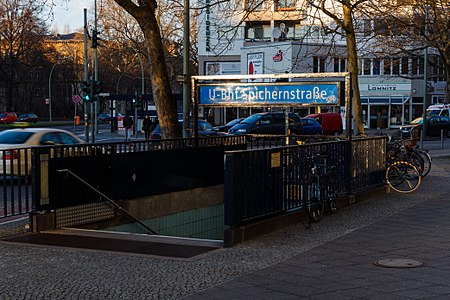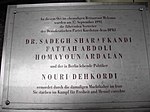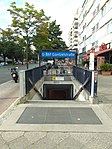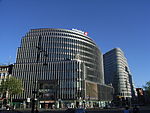Spichernstraße (Berlin U-Bahn)
Berlin U-Bahn stationsBuildings and structures in Charlottenburg-WilmersdorfRailway stations in Germany opened in 1959

Spichernstraße is a Berlin U-Bahn station located on the and the lines, located in Wilmersdorf neighbourhood. The U3 (then called A II and B II) portion opened on 2 June 1959, replacing the nearby Nürnberger Platz station, which was closed and dismantled. The U9 portion, which lies deeper underground, opened on 28 August 1961 as the southern terminus of the new line, then called G. The eponymous street is named after Spicheren in Lorraine, France, site of the 1870 Battle of Spicheren.
Excerpt from the Wikipedia article Spichernstraße (Berlin U-Bahn) (License: CC BY-SA 3.0, Authors, Images).Spichernstraße (Berlin U-Bahn)
Spichernstraße, Berlin Wilmersdorf
Geographical coordinates (GPS) Address Nearby Places Show on map
Geographical coordinates (GPS)
| Latitude | Longitude |
|---|---|
| N 52.496666666667 ° | E 13.331111111111 ° |
Address
U Spichernstraße
Spichernstraße
Berlin, Wilmersdorf
Germany
Open on Google Maps











